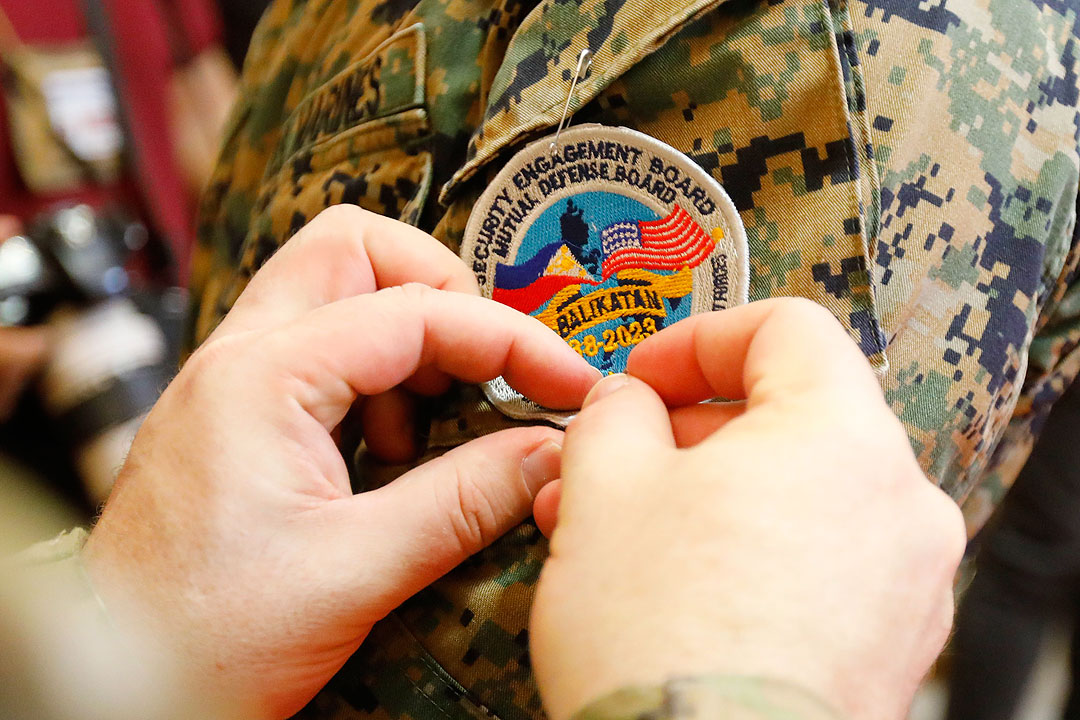Manila and Washington kick off their biggest-ever war games

THE PHILIPPINES and United States kicked off their biggest joint military exercises on Tuesday as they try to counter China’s increasing assertiveness in the South China Sea.
Almost 18,000 members of the Armed Forces of the Philippines and US military will participate in the Balikatan (shoulder to shoulder) war games on April 11 to 28. There will be observers from Japan, South Korea, the United Kingdom, France, India and Southeast Asian countries.
The drills will include live-fire exercises near disputed waters of the South China Sea, including a plan to sink a decommissioned navy ship in San Antonio, Zambales on the main island of Luzon.
San Antonio is about 140 miles from Scarborough Shoal, a Philippine feature in the South China Sea that is claimed by Beijing. In 2016, an international court ruled that both traditional Chinese and Filipino fishermen have the right to fish there. China has ignored the ruling.
It will be the first time the exercises are held under President Ferdinand R. Marcos, Jr., who has sought to boost security ties with the US after his predecessor Rodrigo R. Duterte led a pivot to China away from the US.
Mr. Marcos on Monday ruled out the use of Philippine military bases, access to which by American troops under a 2014 military pact has been widened, to launch offensives.
“We will not let our bases be used for whatever offensive actions,” he told reporters on the sidelines of a commemoration event for Filipino heroes of World War II.
The president said sites under the Philippines’ 2014 Enhanced Defense Cooperation Agreement (EDCA) with the US are aimed to help the Philippines.
In February, Mr. Marcos gave the US access to four more military bases under EDCA on top of the five existing sites. China has criticized the EDCA expansion, accusing the US of endangering “regional peace and stability.”
Also on Tuesday, Foreign Affairs Secretary Enrique A. Manalo said the Philippines and US should discuss how American troops could use local military bases without worsening tensions between the US and China.
‘STRATEGIC RIVALRY’
“As responsible powers, each with a stake in the region’s long-term peace and security, Washington and Beijing need to manage their strategic rivalry, with dialogue and transparent and sincere engagement, where possible,” he told a Center for Strategic and International Studies forum in Washington, based on a copy of his speech sent to reporters.
Mr. Manalo said there would be “adverse repercussions” for the Philippines if military tensions escalate between China and the US.
“The Philippines has been clear and consistent about our interest in maintaining the South China Sea as a sea of peace and stability, and our aim to boost our defense capabilities, including in the framework of EDCA,” he said.
EDCA is a supplementary deal to the 1999 visiting forces agreement, which allows the US to rotate troops in the Philippines and build and operate facilities on agreed locations for both their military forces.
In January, Mr. Marcos and Chinese President Xi Jinping agreed to find a compromise and peacefully resolve issues in the disputed waterway.
The Philippines is eyeing security partnerships with other countries, including a three-way security pact with Japan and the US. It is also in talks to include Australia and Japan in planned joint South China Sea patrols with the US.
The Department of Foreign Affairs (DFA) earlier this month said the Philippines and China would hold preparatory talks in May ahead of expected discussions on joint oil and gas exploration in the South China Sea.
The South China Sea is subject to overlapping territorial claims involving China, Brunei, Malaysia, the Philippines, Taiwan and Vietnam. It is a key global shipping route that is believed to be rich in fish and gas. China claims 80% of the waterway based on a 1940s map.
Foreign Affairs Undersecretary Theresa P. Lazaro said on March 24 Manila and Beijing had agreed that their maritime issues “should be addressed through diplomacy and dialogue and never through coercion and intimidation.”
Three of the four new EDCA locations will be in the northern Philippines — Naval Base Camilo Osias in Sta Ana, Cagayan; Lal-lo Airport, also in Cagayan; and Camp Melchor Dela Cruz in Gamu, Isabela.
Foreign Ministry spokeswoman Mao Ning earlier said the move would inevitably increase military tensions.
Cagayan is about 1,000 kilometers away from self-ruled Taiwan, which China considers part of its territory. Balabac Island in Palawan, which is facing the South China Sea, is also on the list.
The Balikatan exercises come after a three-day Chinese military exercise that simulated targeted strikes and a blockade of Taiwan.
Philippine Defense spokesman Arsenio R. Andolong earlier said the Philippines aimed to finish the construction of the five existing EDCA sites by 2024. Washington has allotted more than $83 million (P4.5 billion) for the projects.
Mr. Andolong said building works at the five sites, which are in Cebu, Cagayan de Oro, Palawan, Nueva Ecija and Pampanga, had been delayed by the coronavirus pandemic and after Mr. Duterte terminated the country’s visiting forces agreement with the US.
The former president restored the agreement a year later after a meeting with US Defense Secretary Lloyd James Austin III.
Mr. Marcos’ assurance that EDCA sites would not be used for offensives assumes the US would not provoke Chinese aggression or fight back in case of an attack, said Hansley A. Juliano, a political economy researcher studying at Japan’s Nagoya University.
“It is also just a polite diplomatic code. Both China and the Philippines know you don’t stockpile arms or invite allies if you’re actually friends,” he said in a Facebook Messenger chat. — Norman P. Aquino and John Victor D. Ordoñez



